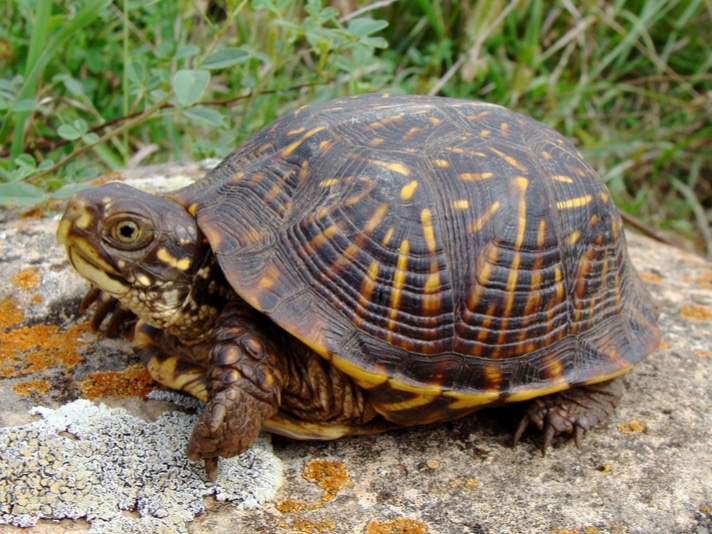My box turtle won't eat, please help.
Q. I am a herp vet and I am having a problem with one of my patients. An ornate box turtle, Gary, stopped eating after a brief medical procedure. I have been tube feeding him weekly for several months now, and the owner and I are desperate for ideas on how to entice him to begin eating on his own again. Help!
Just so you know, the husbandry is correct, and he has a wonderful environment and a very caring owner. But he just won’t eat. His blood work appears normal (and I am using ornate box turtle reference ranges). What can we do?
A. Thanks for writing. As you have surmised, ornate box turtles are not for the novice herper, nor are they an easy chelonian to maintain. Because Gary’s home-life appears to be fine, we can rule out husbandry problems. Most ornates, which come from the Midwestern United States, usually will try to hibernate beginning in the fall, but because he has been kept up this winter, we can assume that hibernation issues are also not the reason for him not eating.
Interestingly, ornates are primarily insectivorous and are attracted to movement, so I would suggest offering Gary live insects, such as crickets, mealworms, waxworms, earthworms, snails, slugs or small pinky mice. Locally collected insects are also often consumed with gusto, including caterpillars (make sure you only offer nontoxic, nonthreatened or endangered species), grubs, beetles, pill bugs, sow bugs, centipedes (yuck!), grasshoppers, spiders, flies and crayfish, which are all usually available seasonally.
Some ornates prefer to eat under water. I also recommend offering meals in the early morning or the late afternoon, when he is likely to be most active. In addition to offering insects, they also seem to relish fungi, such as mushrooms. Many different mushrooms are now available in grocery stores, so try a smorgasbord of those, and forgo collecting wild mushrooms, as several varieties can be quite toxic and can even prove fatal if consumed in sufficient quantities.
I recommend shooting for 60 percent (or more) of the diet being composed of animal matter, and the remainder being composed of fungi, other plant matter and box turtle chow. You can offer moss (edible varieties only), berries, grass (the owner can grow grass from seed or from kits available for feeding birds and cats) and dark green leafy vegetables. Turtles are often attracted to bright colors, so have the owner try offering strawberries, papaya, mango, watermelon, hibiscus flowers, rose petals or other brightly colored food items. I don’t recommend offering a lot of fruit, but if it entices him to begin eating on his own, we can make an exception for the time being.
I also recommend offering a portion of a name brand quality box turtle chow (extruded pellets, crumbles or canned food), which often comes in bright colors and has a yummy, fruity aroma. If dry diets are not readily consumed, try soaking them in fruit juice or a sport’s drink (no caffeine, please) for a time, or crumble some and sprinkle over soft, wet food to encourage consumption.
If he begins eating some box turtle chow, it probably won’t be necessary to supplement Gary with calcium, other minerals and vitamins. But for now, live food that is moving is your best bet for enticing Gary to begin eating, and once he starts chowing down, the diet can be expanded to provide more balance. But, first, let’s get him eating on his own again. There is always a question of whether tube feedings will suppress a reptile’s normal appetite, so it can become a Catch-22 situation. Try backing down the frequency or amount of feedings, offer live insects and invertebrates and let’s see what happens. Gary should begin showing interest in food he can catch. I hope this helps!
Margaret A. Wissman, DVM, DABVP has been an avian/exotic/herp animal veterinarian since 1981. She is a regular contributor to REPTILES magazine.
Need a Herp Vet?
Find a herp vet with our comprehensive reptile vet directory. If you cannot find a herp vet using our reptile vet directory, a good place to go is the Association of Reptilian and Amphibian Veterinarian (ARAV) web site at www.arav.com.



